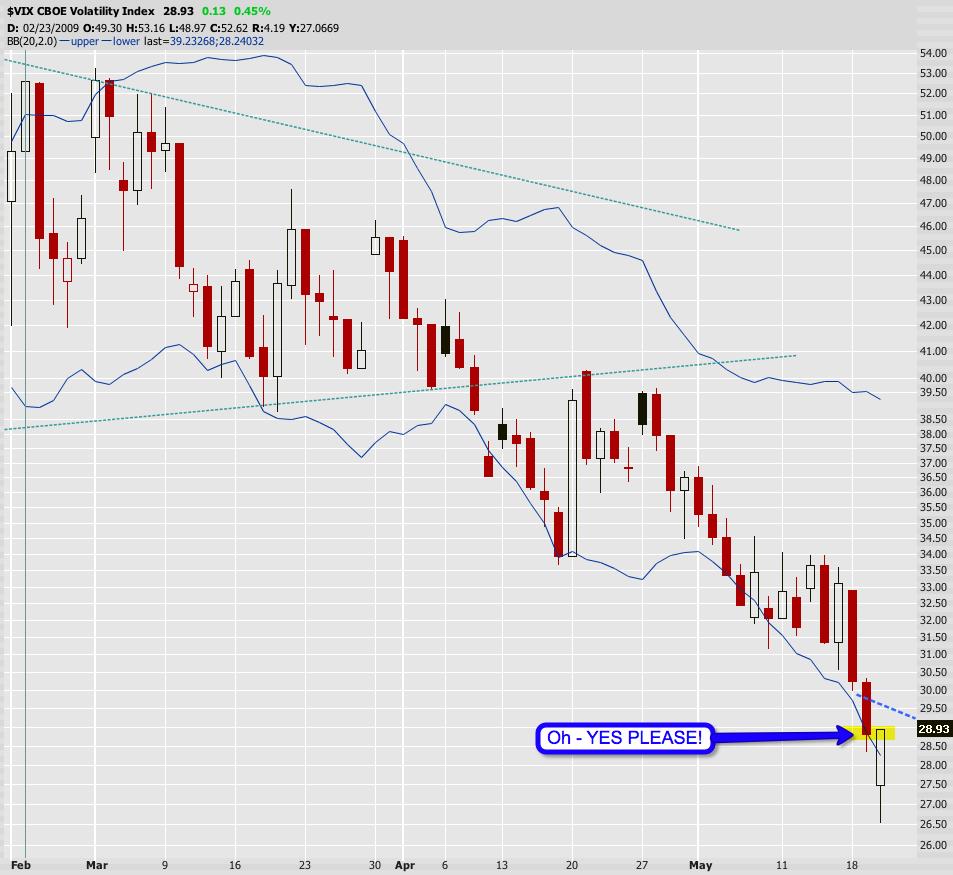Much ado about nothing perhaps? A notable pickup in interest in all things VIX over the last twelve months (maybe distorted a little by VIX swimwear's summer collection)...as seen in Google trends searches for VIX...
The needle in 2008 (E) corresponds to the peak in the VIX about the same time...no surprise there perhaps...but there seems to be renewed interest from the media as it has dipped below 30 for the first time in a while - seen in CNBC's headline...
"As the VIX Continues to Drop, Is S&P at 1,000 Far Behind?"
The VIX is just like any market index, it is an average of what buyers and sellers are prepared to pay - in this case for implied (or expected) volatility in the S&P500.
(If you'd like a reasonably simplified discussion of what volatility and the VIX are - then Barron's has a quick overview and a link to CBOE's "VIX: Fact & Fiction")
Then what is the significance of a VIX below 30?
Not much really suggests Condor Options - Interpreting any given value in isolation is meaningless - it's value lies in comparing against realised volatility (that is actual, real-life, this-is-what-happened volatility in stocks). So while a level of say 30 in the VIX may look good when seen from the perspective of last week it was 40 (suggesting that buyers and sellers of volatility have a relatively more sanguine outlook than last week), if realised volatility over the previous 30 days was only 15, then whoa baby - the market is actually expecting a truckload more (realised) volatility over the next 30 days... In this context, Condor Options points out that realised volatility over the last 30 days was 26 versus a spot at the time of 28...the VIX is slightly expensive versus recent history.
Adam Warner at The Daily Options Report - seems to concur, pointing out that until the VIX starts underpricing actual volatility - implied volatility as priced by the VIX is still expensive. He also makes the inconvenient observation for snappy television headlines - "I think the larger point here is that 30 is not actually a low volatility reading. It just seems that way based on where we went. Historically in fact 30 VIX was quite high."
So does the VIX give any insights into future stock movements?
Well perhaps - while the S&P and the VIX are not inversely correlated (see CBOE report) as some suggest, the VIX, as an average of the market's expectations for volatility, can be expected to be bid up when participants become more uncertain about the future. If you want to protect yourself against uncertainty then buy insurance. The point being that the VIX provides a gauge of how the market is positioned for an uncertain world. The higher the VIX - the more that people are prepared to pay for protection. If they are paying a lot more than recent history in stock movements would warrant, then this could well signal a shift sentiment and prospectively a decline in the S&P500 itself.
In that context, I'm not reading too much into a VIX below 30 when its in line with realised volatility. What I am sensitive to is a rapid movement in the VIX ahead of actual movement in stocks. For example if the VIX were to spike back up through 30, while the S&P500 continues to meander between 875 and 930, then that might be telling us something...
Finally, back to the Evil Speculator where step 2 of his VIX sell signal has been fulfilled...a close above 28.80...



No comments:
Post a Comment